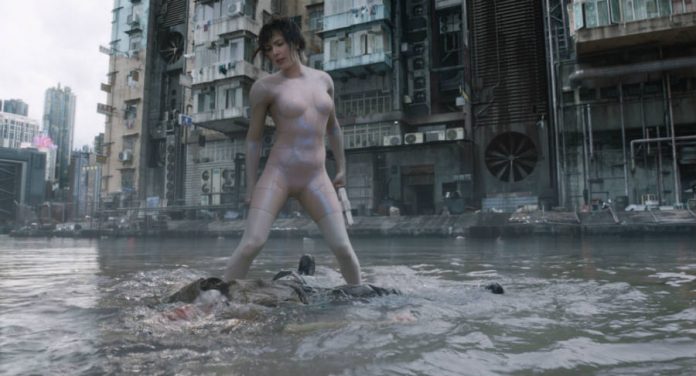
Ghost in the Shell is playing in theaters worldwide, and both fans and critics are raving about the film’s special effects. The live action adaptation draws directly from the 1995 animated movie, and it took new techniques to recreate some of the scenes.
The anime hit has spawned several series and films that delve deeper into the futuristic world of the franchise. Scarlett Johansson plays the central role in the new movie, a cybernetic agent that holds the rank of Major called Mira Killian.
Rupert Sanders directed the movie, which has received mixed reviews story-wise. Early on, the production team was criticized for casting western actors as major characters instead of sticking to the Japanese roots of Ghost in the Shell.
Masamune Shirow set the bar high
Masamune Shirow’s original Ghost in the Shell manga and anime film had quite a striking visual style. Tokyo’s landscape is remarkably different, and the action takes place in unique settings.
As a result, the VFX team in charge of dealing with the live action adaptation had a major challenge in their hands. More so after the director, Rupert Sanders, decided to replicate some of the most iconic scenes from the 1995 animation.
One such scene was the first time we see Major Mira Killian in action, catching a cyber criminal wanted by the police of Tokyo’s Section 9. The agent and the runaway come to a dead end in a courtyard full of water.
Killian’s suit counts with a ‘thermoptic camouflage’ function that, just like in the original movie, allows here to cloak becoming almost invisible. That, in combination with the stage where the two characters fight, took layers upon layers of CGI and green screen shots.
New software was needed to process all the 3D shots
MPC, a special effects studio responsible for the Academy Award-winning visuals of The Jungle Book, was also involved in the production process of Ghost in the Shell.
Working on the film represented a puzzle to the VFX professionals, who ended up creating new, specialized software and other tools to process all the 3D data they used.
Among the most challenging scenes, the effects house had to recreate were the shelling sequence at the beginning of the film and the city’s landscape. Buildings and billboards are prominently featured in the live action movie.
“TO CREATE THESE HOLOGRAMS – OR PHOTOREAL VOLUMETRIC DISPLAYS – THE FILMMAKERS SHOT ACTORS WITH A CUSTOM-MADE RIG OF SOME 80 HIGH-DEFINITION CAMERAS, EACH RUNNING AT 24 FRAMES PER SECOND,” said CNET.
The team also built a real-life version of the Major’s skeleton and cyborg parts. In some scenes, these components are visible in conjunction with the human-like body the cybernetic officer sports in her exo-suit.
Source: CNET











